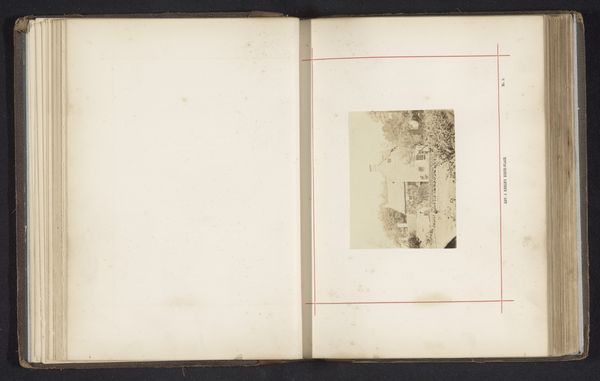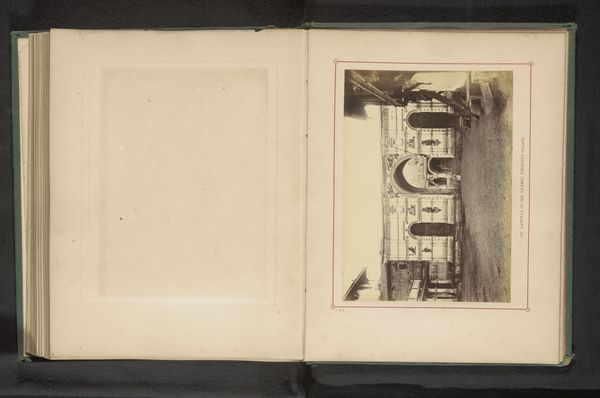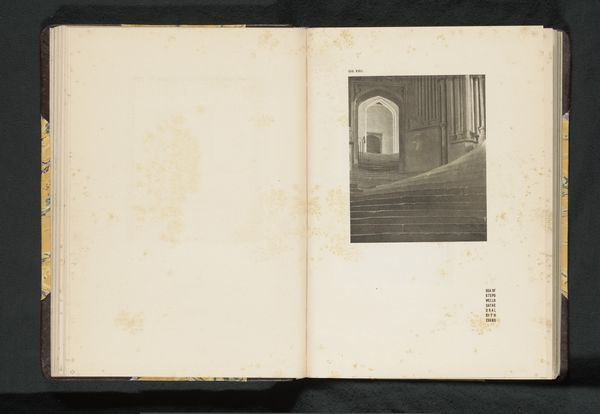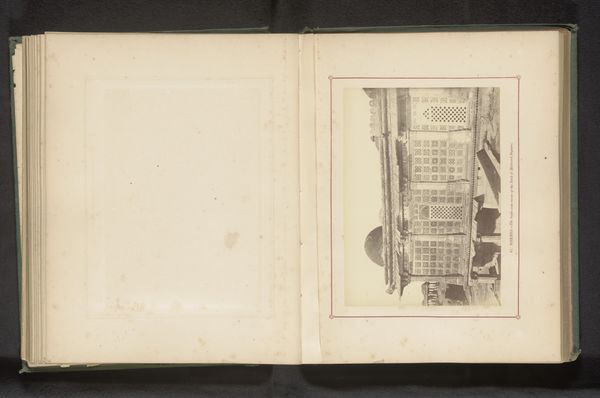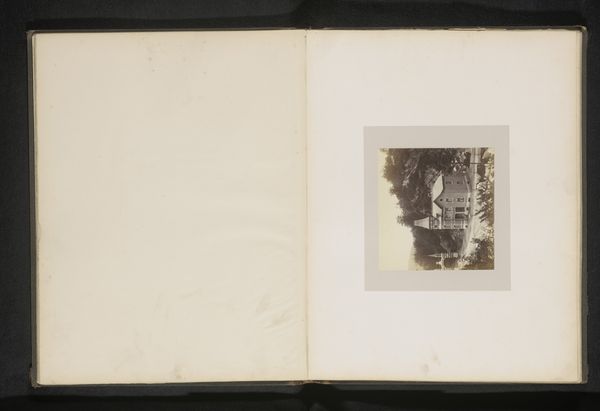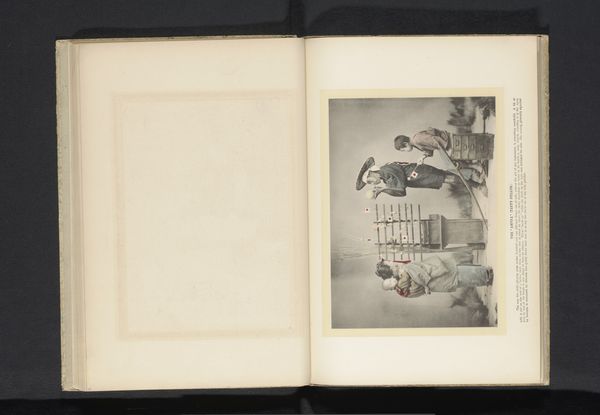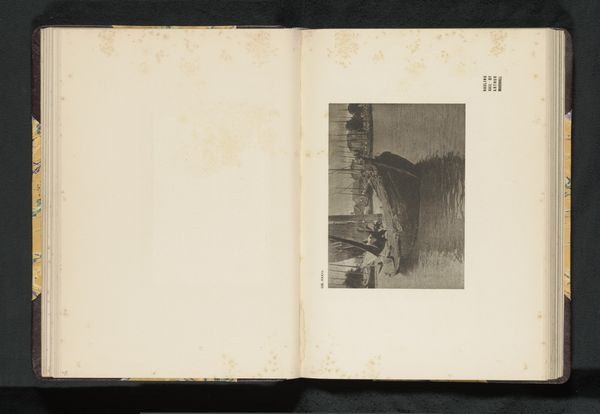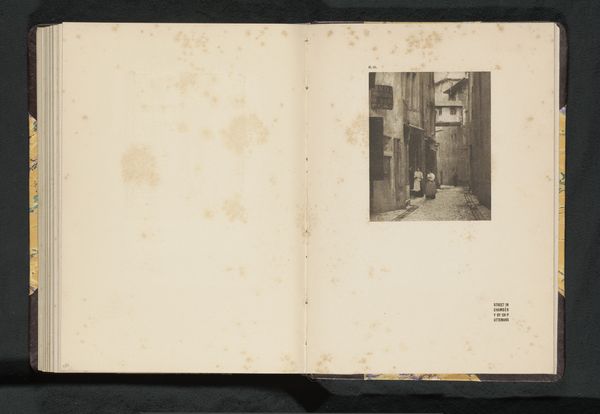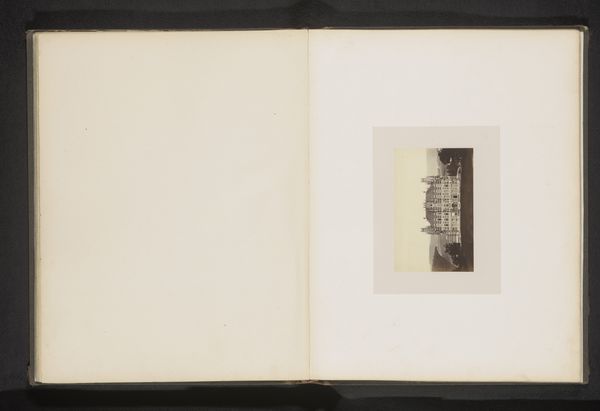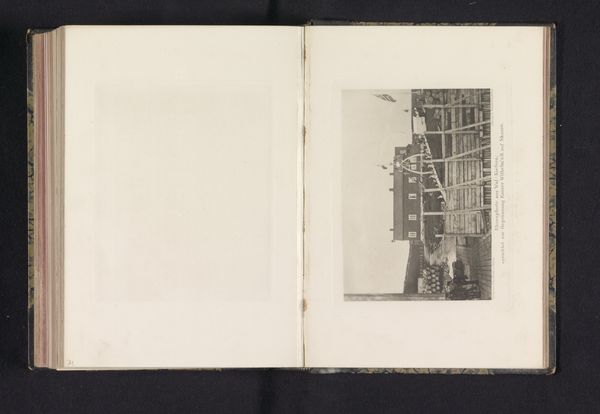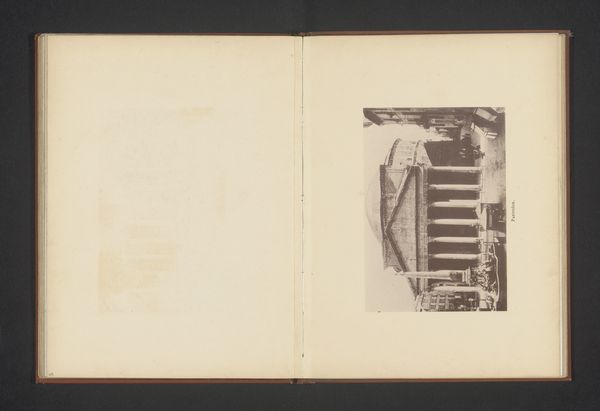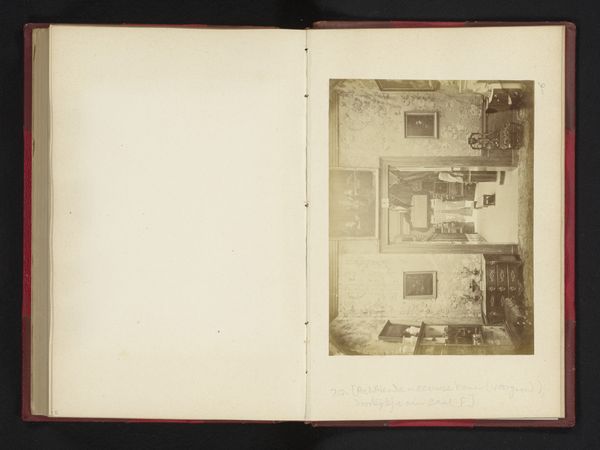
Deel van een tombe van koning Achaemenides in Takht-e Jamshid, Iran before 1885
0:00
0:00
drawing, print, photography, pencil
#
drawing
# print
#
photography
#
coloured pencil
#
ancient-mediterranean
#
pencil
Dimensions: height 195 mm, width 269 mm
Copyright: Rijks Museum: Open Domain
Editor: This is a reproduction of a drawing or print from before 1885 by Jane Dieulafoy titled, "Part of a tomb of King Achaemenides in Takht-e Jamshid, Iran". It depicts what looks like a section of a very ornately carved stone structure. The details, though somewhat obscured, suggest a repeating pattern and a very imposing size. What strikes you about this particular image? Curator: Immediately, the rigid geometry stands out against the organic texture of the stone. Notice how Dieulafoy, likely working from a photograph, carefully rendered the relief carvings. It is a study in contrasts – the sharp, deliberate lines of the architectural design versus the weathered, almost crumbling surface of the material itself. Observe how the shadows emphasize the three-dimensionality of the carved details. Editor: So you're focusing on how the artist uses line and shadow? Curator: Precisely. Consider the use of symmetry. The design appears balanced, but closer inspection reveals subtle irregularities in the stonework, the damage to the monument disrupting what must have been perfect geometric balance. Dieulafoy highlights this interplay between ideal form and material reality, drawing attention to the inherent tension. How does that contrast influence the viewer's reading of this historical object? Editor: It’s fascinating to consider the layers – the original artists creating this geometric design, and then Dieulafoy interpreting that design. There's almost a conversation happening across time. Curator: Precisely. The photograph freezes a moment, becoming an artifact itself, now reproduced as a drawing. Note that while perspective and scale are employed to document an existing tomb, there is an undeniable focus on the visual forms. It is through this structure of line and plane that this object speaks to its original glory. Editor: This has given me a totally new way of looking at how geometry interacts with history. Thanks for your time! Curator: An insightful exchange. I hope this perspective proves useful to your explorations of art history!
Comments
No comments
Be the first to comment and join the conversation on the ultimate creative platform.
